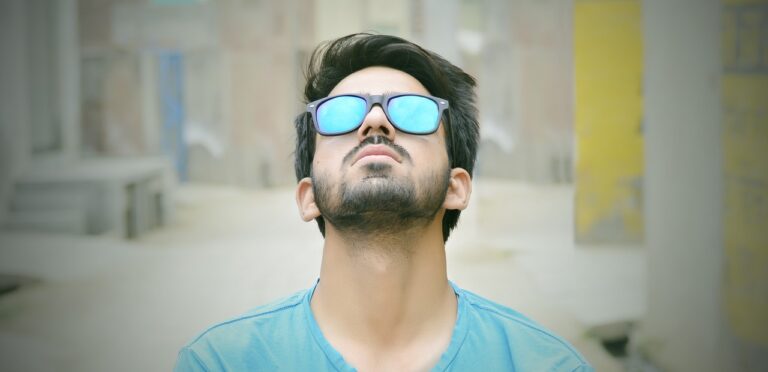Our Conscious Universe: Part II
By Ryan Castle
The question of consciousness is often posed as a human issue, but we do not have a monopoly on the concept. The scientific idea that other forms of life possess innate consciousness has simmered since Darwin’s era, yet it remains a contentious and provocative topic. While many are ready to acknowledge the consciousness of dolphins and great apes, what about the intelligence of crows? Or the enigmatic behaviors of octopuses? Perhaps even insects? Most people end up having a boundary, a point at which they are no longer comfortable describing an animal as conscious, though that boundary of where consciousness begins and ends in the animal kingdom is different for each person. However, scientists are finding this boundary increasingly elusive. As researchers move away from anthropocentric ideas of measuring consciousness, they are uncovering behaviors that are unmistakably conscious, and often in the most surprising places.[i]
Consider the crow, a bird that demonstrates intricate social structures, tool use, and even a form of language. These birds have been observed crafting tools from twigs and are known to share ideas across generations, indicating a level of cognitive ability that suggests advanced awareness. Similarly, the octopus, with its unparalleled neural complexity and evident problem-solving abilities, presents a compelling case. These cephalopods exhibit behaviors such as learning to use tools by observation and using shells to build suits of armor. Such actions go beyond mere instinct, suggesting a form of awareness and adaptability that parallels humans.
Does this mean that consciousness is relegated to the most intelligent of animals, and stops at a certain point of brain simplicity?[ii] This is a problematic idea, say several groups of scientists, who point out that even the humble bee shows the capacity to learn, make choices, and engage in play, suggesting a level of awareness previously unacknowledged. Research has shown that bees can be trained to recognize and differentiate between various colors and patterns, demonstrating not just learning but also memory and decision-making skills. More intriguingly, bees have been observed engaging in what appears to be play behavior, rolling small balls in a manner not directly linked to survival or reproduction, hinting at a richer inner life than previously assumed.
One of the fundamental challenges in discussing animal consciousness is the conflation of consciousness with intelligence.[iii] In humans, we often use these terms interchangeably, assuming that greater intelligence implies a higher degree of consciousness. However, science and philosophy draw a clear distinction between the two. Consciousness is not about cognitive prowess or intellectual achievement; it is about the capacity to experience phenomena, to engage actively with the world, and to adapt to those experiences.[iv] Albert Einstein, despite his remarkable intellect, was no more conscious than a kindergartener. Both experienced their worlds, reacted to stimuli, and adapted to their environments in ways that were meaningful to them. To be conscious means to be a participant in the world rather than merely being acted upon by it.
Historically, many believed animals were mere automatons, driven by instinct without true awareness. This view, reminiscent of Descartes’ philosophy of animals as “beast-machines,” has been debunked as we have learned animal behavior is far more complex than assumed. Yet as our understanding deepens, we are now beginning to realize that the consciousness of animals is even more complex. A bee playing with a ball is not just a trivial behavior; it is a glimpse into a world of interaction and adaptation, demonstrating consciousness. This understanding compels us to recognize that consciousness can exist in myriad forms, independent of what we traditionally consider intelligence, and invites us to appreciate the rich tapestry of experiences across different forms of life.[v]
The implications of recognizing animal consciousness extend far beyond scientific curiosity, touching on profound ethical considerations. If we accept that animals possess consciousness, it raises questions about the morality of our treatment toward them. The frequent brutality and exploitation animals endure take on a starkly different light when one sees them as fellow conscious beings. This concern is not new; for millennia various cultures have viewed all life as interconnected and equally deserving of respect and compassion. These traditions teach that all beings share a fundamental consciousness, reinforcing the idea that every life form participates in the intricate web of existence. As science begins to catch up with these ancient understandings, we are called to reexamine our behaviors and attitudes.
Apart from ethics, this realization provokes another fundamental question: if animals, from the mighty elephant to the tiniest insect, are conscious, could consciousness extend beyond the animal kingdom? At what point does the rabbit hole of conscious beings end? Does it end? As we delve deeper into this series, “Our Conscious World,” we will explore these profound implications and will be moving beyond individual organisms.
As science continues to uncover the depth of consciousness across species, we find ourselves at a crossroads of understanding and responsibility. The growing body of evidence challenges us to rethink our interactions with the natural world, fostering a deeper sense of connection and respect for the diverse expressions of life around us. Whether it reassures or unsettles you, think on the idea that you share your world with conscious beings, that each bird and bug is experiencing the same world alongside you, doing their best to navigate a life filled with the same type of bewildering phenomena to which we all struggle to adapt.
References
[i] Butlin, P. (2020). Affective experience and evidence for animal consciousness. philosophical topics, 48(1), 109-128.
[ii] Panksepp, J. (2005). Affective consciousness: Core emotional feelings in animals and humans. Consciousness and cognition, 14(1), 30-80.
[iii] van de Grind, W. (2000). Neuronal basis of conscious experiences in the animal kingdom. Vlaams Diergeneeskundig Tijdschrift, 69(6).
[iv] Cleeremans, A., & Tallon-Baudry, C. (2021). The function of consciousness is to generate experience.
[v] Castle, R. (2016). Factors For Identifying Non-Anthropic Conscious Systems. Cosmos & History, 12(2).






